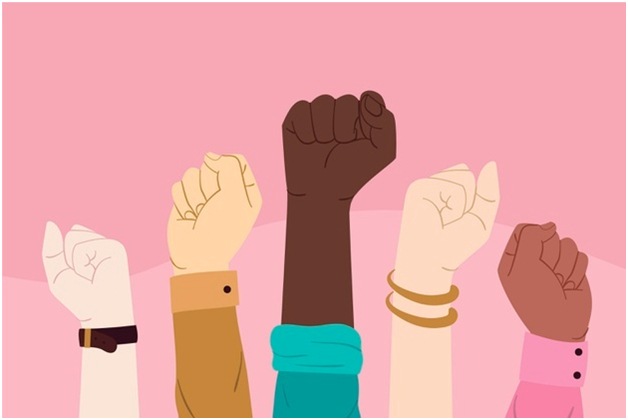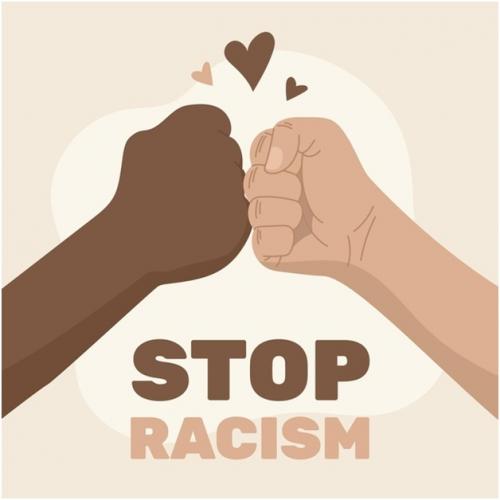
Race: The Power of an Illusion and How to Curb Racism
Visual differences have been the epitome of race as these differences have been the center of attention for allocating racial characteristics to human beings. A person's hair color, eye color, skin color, and even hair texture are linked to race. So many of the ideas, such as the superiority of one race over the other, originated because people could visually differentiate one race from the other, and racial distinctions have been the main resort for shaping neighborhoods, politics, and society.
People perceive that mutations in genes have led to a change in appearance and eventually race and these changes or mutations are literally unchangeable. People perceive this because the idea of race has always compelled individuals to think about visual representations. The fact that biological factors which are rooted deep in the DNA are responsible for changes seen above the surface of the skin seems to be the best possible causality of race. However, recent research begs to differ on this stance. Numerous researches have been done on race, and most of them debunk the myth of gene mutation as the causality of race.
The variation within genes in any two individuals, however, is not as different as people perceive it to be on the basis of visual representation. There can be as much difference between the two individuals belonging to another race. To put it in simpler words, it means that any two individuals, whether they belong to the same race or belong to two completely different races, maybe as different from each other as they are from any other individual. Genetic research concerned with race has evolved and revealed two closely-knit realities.
Humans today are more or less the same when it comes to genes but with the exception of identical twins. To say that the causality of race is genes or genetic mutation is to say that the earth is flat. The only difference is that of perspective, mainly because we are unable to interpret the changes in evolution is why we are unable to interpret the causality of race. The causality of race is not one-dimensional as it has involved other forms such as migration, geography, and gene mixing over the course of history.
Thus it is difficult to distinguish those who are called white from those who are called black on the basis of genes. There is much diversity as well as genetic differences between races and among racial groups. Geography can be used as the causal explanation for race as there can be an accumulation of more genes in one place as compared to another. Thus genetic variation is not the causal difference in a race. The main causality is actually how human beings have moved geographically as well as how they have mated throughout history, which explains the origins of the race.
All humans are thus genetically similar to Africans as the human lineage was originated according to anthropologists from Africa because of the fossils found in Morocco. These fossils indicate that humans started to develop almost three billion years ago any form of features. Two million years ago, some colonies of Africans began to migrate to the extent of the globe, which forged lineages that were isolated in far end corners of the world.
It is thus thought by some and believed as well that the development of the lineages caused by the migration to the far end corners of the world is what led to a change in the features of humans and the formation of a distinct form of races which are present today. Thus geography and migration tend to be the causality of race. According to Gould, the issue of the causality of race, however, is not particularly related to the migration of the first human lineage, and there can be some explanation through genes as well.
This is because Gould believes that the main issue is that where did the initial lineages go, and it can not be simply said that Neanderthals were just gone and the Homo Erectus just died because it might be the case that there was some sort of a second migration of the Homo Sapiens and that this second migration resulted in modification. Major migrations such as agricultural migration in which individuals who were prone in agriculture came to Europe, but other migrations are rather subtle, and there are fewer proofs as to how the individuals moved from one place to the other. It can be possible that it took more than a hundred thousand years for genes to actually propel and mix with other genes in order to cause different modifications.
The best explanation for migration as causality for the race is that it must have taken a lot of time and probability of different genes mixing together to forge a new form of race. In evolutionary terms, a hundred thousand years is not that long, and thus it can be stated that the time in which human beings have been separated has not been long enough for differences in the race to develop. The time for the evolution of the human race into a completely different subspecies has simply not been enough. Thus much genetic variation could not have happened within a hundred thousand years. This means that under the skin, almost all human beings are the same and people become fooled because of the race since the visuals form into an illusion.
Curbing the Menace of Racism
It would not be an understatement to say that humans can be one of the most cooperative species as history would dictate. Not only have humans managed to build up interconnected ecosystems, but they have also demonstrated the ability to form alliances and peace treaties. However, the plague of racism and racial discrimination tends to bring unnecessary difficulty for those who are targeted. The ingrained racism the world faces today is not just limited to the job market or the workplaces, but it transcends the urban environments and crosses borders. There have been numerous approaches to combat racism and conflicts associated with it. It became evident in 2020 that police brutality is nothing but a surface manifestation of the actual problem, and to eradicate the issue of racism, there are certain steps that must be taken.
Developing a National Action Plan against racism
If countries develop holistic national action plans against racial discrimination, then that can help project equality in all spheres, specifically when it comes to individuals who target other ethnicities at workplaces. However, it is imperative to note that a national action plan to curb racism must rely on the influence of social actors and influential groups so that it is prepared, developed, projected, evaluated, and monitored successfully. The action plan must inculcate the civil society and the legislative branch so that the interests of the targeted group can be represented to make a long-lasting impact.
Moreover, racism can take different forms. It is not imperative that racism is targeted only towards African American community. In fact, racism is targeted towards Asians, Jewish and other ethnicities living in a multicultural society. This is why countries need to take the input of different stakeholders.
Promoting diversity at Institutional Level
The key to working as a multifaceted work community is trust. Building an atmosphere of trust throughout the organization has a direct impact on business. When individuals feel that they can make use of their own skills in their work, regardless of age, culture, or gender, it is seen as direct economic benefits and with an open discussion at workplaces and teams about what the natural way of working for you is, and what kind of strengths you can find in your work community when everyone gets the best out of their strengths, the whole organization benefits.
Equal treatment of workers is the starting point for a diverse work community. Exploiting diversity requires understanding, acceptance, and appreciation of diversity. It is the responsibility of the supervisors and every individual to ensure that a culture that allows and utilizes diversity is created in the workplace. Diversity is a resource that promotes the development of policies and services. The attributes of diversity are age, gender, disability, health, ethnic origin, citizenship, language, religion, belief, and sexual orientation, as well as differing training, experience, skills, ways of working, personality, and values.
Equality means that all people are equal irrespective of their gender, age, ethnicity or national origin, nationality, language, religion and belief, opinion, disability, state of health, sexual orientation, or other person-related cause. Equality at work refers to gender, gender equality related to gender identity or gender expression.
Fighting Racism at International Level through Global Cooperation
During the past decade, efforts to eliminate racism have risen to the top of the international sustainable development agenda. This has brought immense attention towards understanding the different levels and causes of racism in international society. Despite the significant body of research on the domestic causes of racism, a fundamental weakness of development approaches is that the international society at large is ignored in the analysis of the causes of poverty.
The role of the international society and the system prevalent in the international society in causing racism has received little to no attention by the mainstream development studies. The relations between countries in the international system and the laws that regulate these relations have a significant impact on resource allocation and availability within developing countries which affects the developmental outcomes. In particular, there is a significant relationship between inequality in international society, which shapes the international laws and economic relations that has a considerable impact on global poverty and racism.
The exploitative and unequal structure of trade relations which create racism and inequality can be dated back to the colonial era when the structural inequalities originated with the first step towards colonialism. The transfer of wealth from the colonies and the indigenous land to the European powers only benefitted the European powers. Over time a hierarchy of the world economy was created by the European powers who occupied different positions in it. This led to the development of superiority of the Europeans over other ethnicities such as Asians and Africans.
Bottom Line
All human endeavors aim at accomplishing some ounce of what is commonly considered as good. If most activities are means to a higher-end, then almost all form of human activity is in itself a step close towards betterment. Thus every step towards the eradication of racism must be considered as accomplishing the ultimate good in society. However, the inhumane behavior with which some individuals are subjected in a society is often based on racial prejudices. These prejudices are based on an illusion of race which stems from stereotypical views and injustices. To curb the menace of racism, it is imperative that countries follow a national action plan, and every country works together to decrease injustices and equalities stemming from such racism at the global and national levels.#ThoughtProvoking
#EndRacism
#RaceIsAnIllusion
#EqualityandJusticeForAll
- Comments (26)
- Recommended
- Milestones
Here are your recommended items...
Here are your milestones...









So I also say; Stop that nonsense. All people are equal. Any how they look